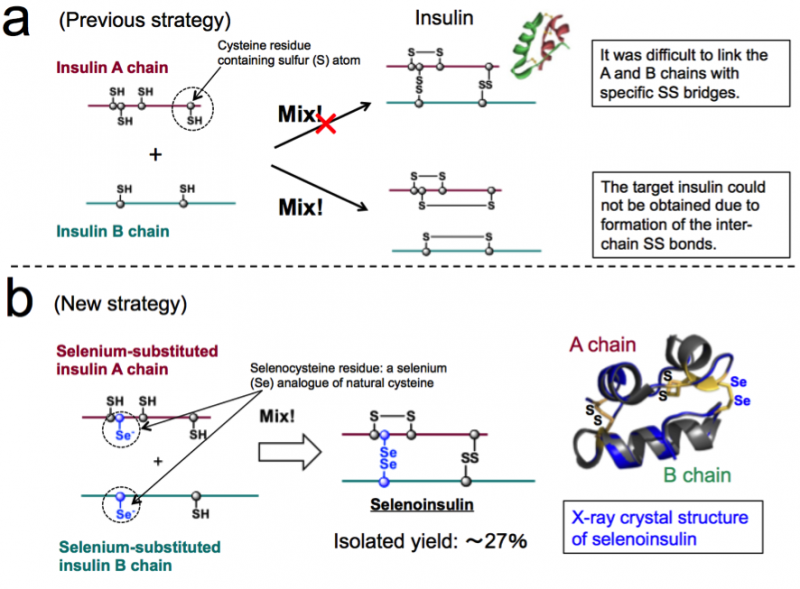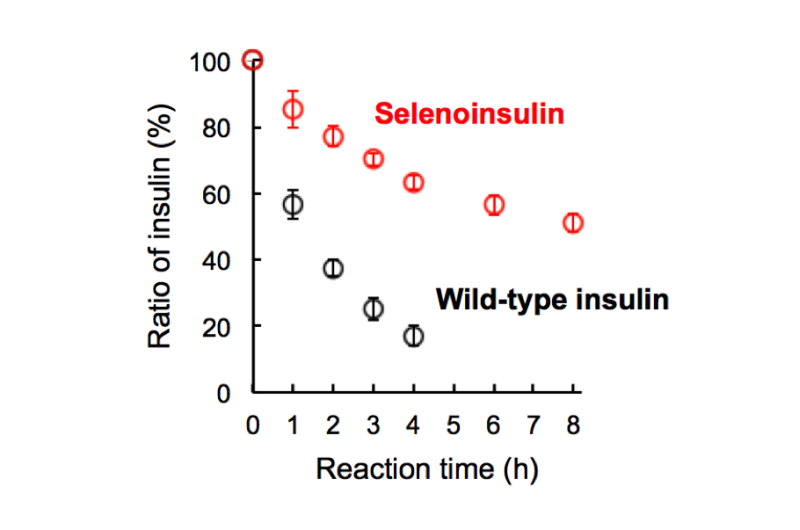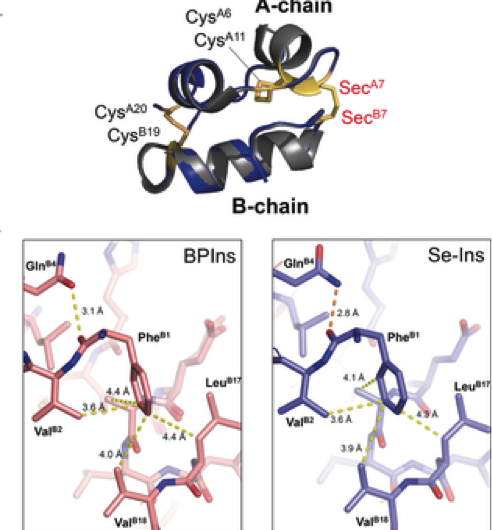Successful synthesis of a new insulin analogue

A group of researchers has developed synthetic insulin analogues selenoinsulin (Se-Ins) through the replacement of the interchain disulfide in bovine pancreatic insulin (BPIns) with a diselenide bridge.
This group demonstrated that Se-Ins had a nearly identical structure and bioactivity comparable to those of BPins, and that it had enhanced resistance to IDE degradation. This holds promise for application of Se-Ins to a long-lasting insulin preparation in diabetes therapy.
After circulating in the blood stream, insulin is degraded by an insulin degrading enzyme (IDE) in the kidney and excreted in the urine. This group thought that the production of insulin with high resistance to degradation by IDE would lead to the development of a new type of long-lasting insulin preparations that could circulate in the body for a long time.
Insulin consists of two polypeptide chains: A chain and B chain, connected by a disulfide bond (Se−Se bond), so it's difficult to take insulin only from these chains because of Se−Se bonds. Thus, this group thought that if insulin A-chains and B-chains containing selenium (Se) instead of sulfur (S), were used, the diselenide bond (Se−Se bond) would be formed quickly and then the chain-assembly reaction could be carried out efficiently, as Se is more reactive than S.

In addition, Se-Se bonds are more stable than S-S bonds, so this group anticipated that Se-Se bonds would give extra structural robustness on the insulin fold, thus resulting in the enhanced resistance to IDE degradation due to its intrinsic stability. Based on this concept, this group succeeded in the synthesis of Se-containing insulin A and B chains, as well as obtaining Se-Ins at the isolation yield of up to 27% by reacting peptide chains under optimal conditions.
This group demonstrated that Se-Ins had a nearly identical structure to that of BPIns, suggesting that Se-Ins has a bioactivity comparable to that of BPIns. Experiments of degradation of BPIns and Se-Ins by using IDE showed that the degradation rate of Se-Ins was much slower than that of BPIns. From this, it is thought that Se-Ins has a long-lasting nature and could be a new class of long-acting insulin analogues for diabetes therapy.

More information: Kenta Arai et al. Preparation of Selenoinsulin as a Long-Lasting Insulin Analogue, Angewandte Chemie International Edition (2017). DOI: 10.1002/anie.201701654
Journal information: Angewandte Chemie International Edition
Provided by Osaka University
















